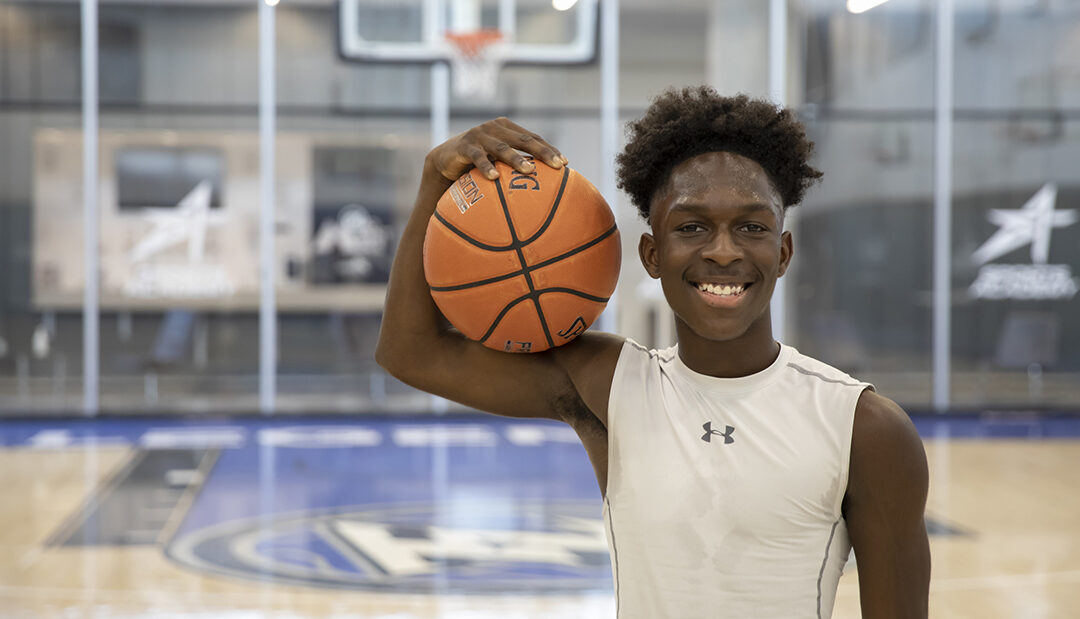Our world-renowned sports medicine experts are ready to help your injured athlete get back in the game. We have unparalleled experience providing nonoperative and arthroscopic care to treat common sport-related injuries including concussions, ligament injuries and cartilage conditions in the knee, ankle, shoulder, elbow and hip in young and growing athletes.
Sports Medicine expert Jacob C. Jones, M.D., RMSK, shares information about muscle strains and how to handle these types of injuries in young athletes.
What is a muscle strain?
A muscle strain is a disruption of the muscle fibers in a certain muscle group. Muscle strains can be mild or they can be severe, causing muscle tearing.
What causes a muscle strain?
Muscles are constantly being pushed and pulled, but when a muscle contracts at the same time that it is being pulled, a strain can occur. This type of muscle movement is called an eccentric contraction.
What are the symptoms of a muscle strain?
In mild strains or low-grade muscle disruptions, the most common symptom will be pain in the area. Severe disruptions or tears can also cause swelling, more noticeable weakness, and even bruising.
Should you seek medical treatment for a muscle strain?
It is definitely wise to seek medical treatment for muscle strains. In mild cases, a young athlete may want to consult with their athletic trainer for advice and recommendations on reducing the pain. Athletic trainers can also help determine whether the athlete needs to see a physician for the injury.
Relative rest, in combination with muscle rehab, is the best treatments for a strain. It is important to allow the muscle to heal while also building strength and flexibility to avoid further injury. Even in high grade muscle tears, surgery may not be commonly recommended.
Are certain muscles more at risk for strains?
Yes, muscle groups that are at the highest risk for strains are those that cross multiple joints. For example, some hamstring and quadricep muscles cross both the hip and knee joints and calf muscles cross the ankle and knee joints. Any muscle can be strained, but those groups are more likely to be injured.
How can you avoid muscle strains?
Muscles are less likely to have a strain if they are flexible and strong. Stretching daily can help provide your muscles with more flexibility and strength. Additionally, it is important to also warm up your muscles before working out or playing a sport. Muscles are less likely to strain or tear when they are warm, so it is important to not skip warm-ups before practice.
What does recovery from a muscle strain look like?
Once pain allows, it is important to do some rehabilitation to the muscle before returning to regular activity. In mild strains or low-grade disruptions, recovery time may take weeks. In more severe cases that lead to muscle tears, recovery time may take months. We look for good range of motion, minimal to no pain, and good strength prior to return to sport.
What happens if an athlete returns to sports or activity before the strain is healed?
The biggest risk of returning to athletics or sports too soon is re-aggravating the muscle and extending the recovery time. Additionally, having a strain may cause you to favor one leg or arm and could lead to further injury.
How can ultrasound be used to diagnose and treat muscle strains?
Specially trained experts can use musculoskeletal ultrasound to evaluate injured joints, ligaments, tendons, muscles and bones. Ultrasound can visualize soft tissues like muscle well with a high level of detail. When looking at a muscle using ultrasound, a low-grade strain may show some edema, swelling caused by fluid in tissue, while a more severe strain that has already torn will clearly be visible. Using ultrasound can also allow physicians to determine where additional treatment or care is needed in treating muscle strains. Ultrasound can also be used for treatment of chronic muscle tears not improving with other conservative measures.
Sports medicine is a medical and surgical specialty that considers the comprehensive needs of athletes and provides management for sport-related injuries and conditions. Young and growing athletes are highly competitive and have unique conditions that require care by a pediatric team of experts. Learn more about our Center for Excellence in Sports Medicine and how board-certified pediatricians, pediatric orthopedic surgeons, physical therapists, athletic trainers, psychologists and other sports medicine specialists work side-by-side with each athlete, their parents and coaches to develop the best game plan for treatment, rehabilitation and safe return to sport.

